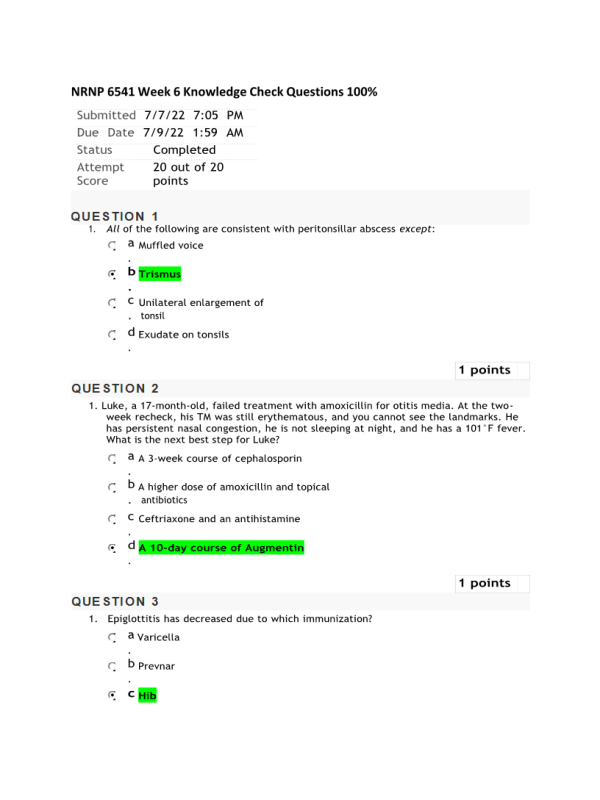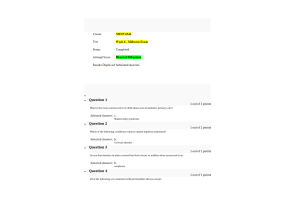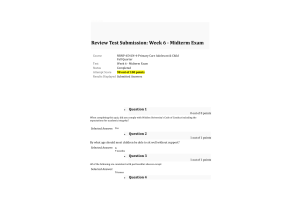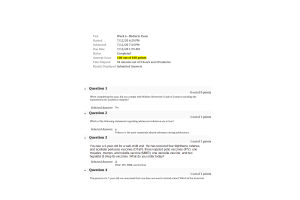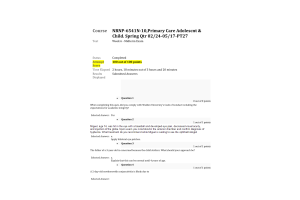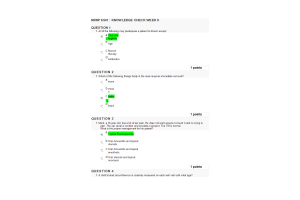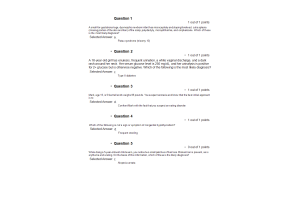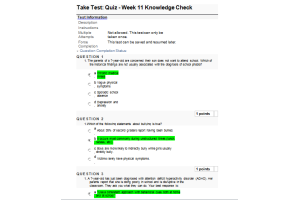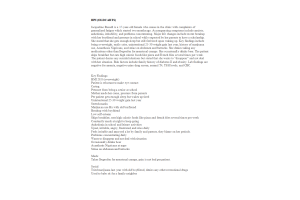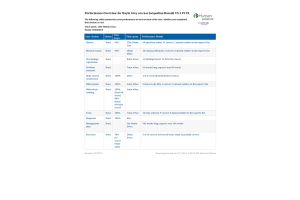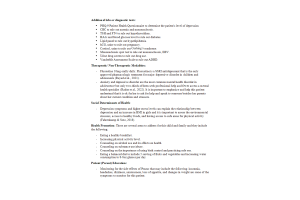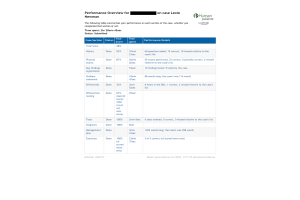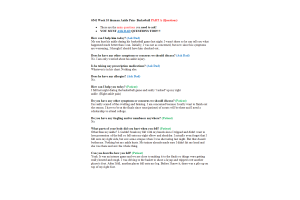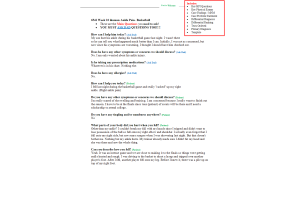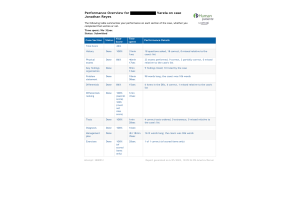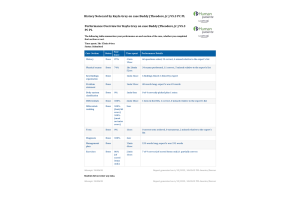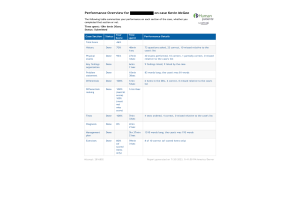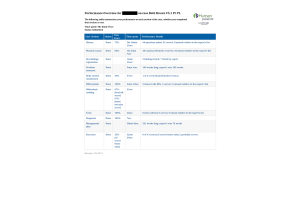NRNP 6541 Week 6 Quiz - Knowledge Check (20 out of 20 Points)
- $29.00
- Question: All of the following are consistent with peritonsillar abscess except:
- Luke, a 17-month-old, failed treatment with amoxicillin for otitis media. At the two week recheck, his TM was still erythematous, and you cannot see the landmarks. He has persistent nasal congestion, he is not sleeping at night, and he has a 101°F fever. What is the next best step for Luke?
- Question: Epiglottitis has decreased due to which immunization?
- Question: A 4-month-old presents with both eyes turning inward. What is this called?
- Question: A 12-year-old girl was brought to the emergency department because of severe sore throat, muffled voice, drooling, and fatigue. She had been sick for the past 3 days and is unable to eat because of painful swallowing. The parents deny any history of recurrent pharyngitis. The patient still managed to open her mouth and you were able to see an abscess at the upper pole of the right tonsil with deviation of the uvula toward the midline. Examination of the neck reveals enlarged and tender lymph nodes. Which of the following is the most appropriate management?
- Question: Riley, a 12-year-old girl, has scaly, hyperpigmented lesions in a "Christmas tree" distribution. It is predominantly on her trunk. One lesion is on her buttock that is larger than the other, at about 4 cm in diameter. What is your diagnosis?
- Question: Which of the following complication of strep pharyngitis cannot be prevented with antibiotics?
- Question: Conductive hearing loss can be caused by
- Question: Which of the following eye findings would be considered an ophthalmic emergency?
- Question: You are performing an examination of a 3-year-old who is new to your office. Which finding requires immediate further evaluation?
- Question: Mark, a 10-year-old, has a lot of ear pain. He does not want anyone to touch it and is crying in pain. The ear canal is swollen, and exudate is present. The TM is normal. Mark should be instructed to do which of the following?
- Question: A 7-month-old female was brought by her mother to an outpatient clinical because of a 2-day history of fever, copious nasal secretions, and wheezing. The mother volunteered that the baby has been healthy and has not had these symptoms in the past. The infant’s temperature is noted to be 100.7°F, her respiratory rate is 50 breaths/min, and her pulse oximetry is 95% on room air. Physical examination reveals no signs of dehydration, but wheezing is heard on lung auscultation. The infant shows no improvement after three treatments with nebulized albuterol. Which of the following is recommended treatment?
- Question: A 16-year-old presents with pharyngitis, cough, and high fever. Her chest x-ray reveals bilateral pulmonary infiltrates. Her white blood cell count is normal, and the neutrophil count is normal. The most likely etiology is
- Question: A 16-year-old is brought in as a walk-in by his parents. His parents state that he acutely developed a fever, chills, and rash. He has been confused and not answering their questions. On examination he is toxically ill appearing, and is febrile, tachycardic and hypotensive. He is noted to have a diffuse petechial rash. What is the most likely diagnosis?
- Question: While doing a 5-year-old well child exam, you notice two small patches of hair loss. Broken hair is present, as is erythema and scaling. On the basis of this information, which of these is the likely diagnosis?
- Question: Sarah, age 15, presents with pain and pressure over her cheeks and discolored nasal discharge. You cannot transilluminate the sinuses. You suspect which common sinus to be affected?
- Question: A child's head circumference is routinely measured on each well visit until what age?
- Question: You are on call and receive a phone call from the parents of a 13-year-old known asthmatic. She has been having chest tightness and a worsening cough for 48 hours. She has significant nasal discharge that began 14 days ago and intermittent complaint of headache. She is now running a low-grade fever. Her peak flow the last 48 hours is 70–80% of personal best. Her temperature right now is 101.7°F. She is on salmeterol with corticosteroid (Advair) and PRN albuterol. Which of the following is most appropriate?
- Question: An eye that deviates in when covered but that returns to midline when uncovered is an
- Question: Seborrhea dermatitis is common for both infants and adolescents. Which is not correct for this condition?
